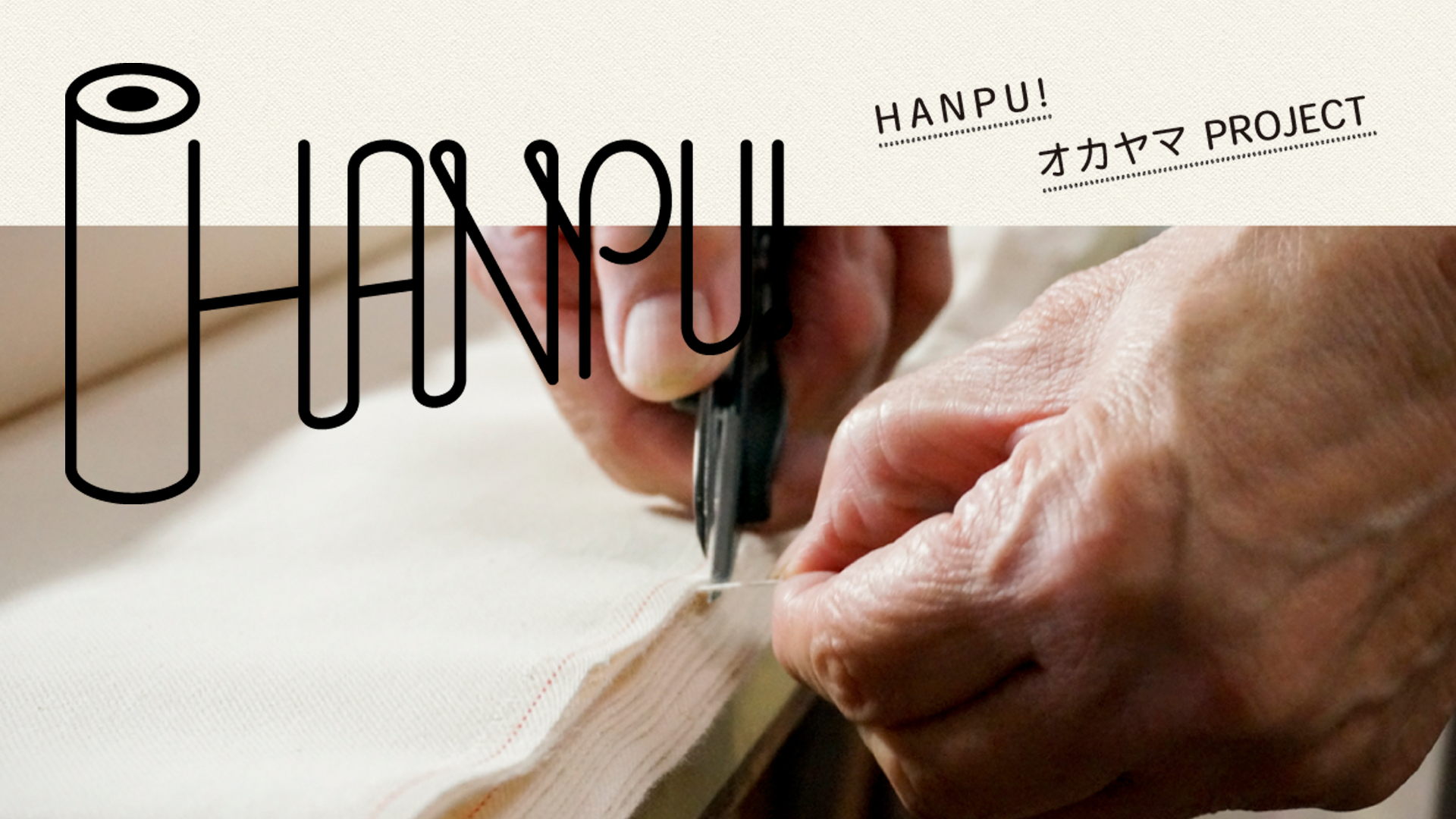The “Hanpu! Okayama Project” is project that uses Hanpu (Japanese canvas) as a foundation for thinking about regional culture and craftwork.
The “Hanpu! Okayama Project” is project that uses Hanpu (Japanese canvas) as a foundation for thinking about regional culture and craftwork.
Approximately 200 years ago Hanpu (帆布 = Japanese canvas) was invented to enable trading vessels to quickly, safely and surely reach their destinations through turbulent seas. We are now on the lookout for contemporary creative perspectives on the potential of Hanpu, the canvas that revolutionized Japanese trade. This open competition brings together creatives, fabric manufacturers and retailers for a new challenge.
Commercialization via New-Style Concept Store Linking Aeon Mall and Local Craftwork
From jeans to traditional handicrafts such as Bizen ceramics Okayama Prefecture is home to a diverse range of craftwork.
The shopping center Aeon Mall Okayama (opening December 2014) aims to focus on this unique aspect of the region by developing “Haremachi-Tokku 365″(ハレマチ特区 365), a craftwork zone for presenting the delights of Okayama.
Starting with an exhibition at [[[“Haremachi-Tokku 365”]]] it is hoped that products born of this Hanpu project will be commercialized.

Japanese canvas Created by Traditional Craftspeople in a 130 year old Factory
Hanpu is a thick fabric woven from cotton or hemp. Kurashiki City in Okayama Prefecture is the largest producer of the fabric in Japan, accounting for approximately 70% of domestic production. Of that, only the very finest quality fabric is awarded the label of ‘Kurashiki Hanpu’.
The varying thicknesses of Kurashiki Hanpu is measured by an 11 degree system and the fabric is employed in a wide variety of situations, from those that demand super-strength (e.g. industrial conveyor belts, sumo loincloths and judo uniforms) to everyday uses that allow for taking pleasure in its texture (bags and socks, for example).
The manufacturing process remains almost unchanged over its 130 year history, and strict quality management combined with the manual labor of the craftsperson means that each loom can produce approximately 50m of Hanpu per day.

Call for Submissions: Overview
The purpose of this project is to increase awareness of Kurashiki Hanpu, and we seek submissions from individuals or teams that are looking to commercialize or realize design plans that connect with the future. There are three submission categories, outlined below.

The uses of Hanpu span from sails to industrial conveyor belts and work clothes. For the most hardworking of fabrics this category proposes a fun twist, calling for designs suitable for celebrations, parties and other special days.

Long used in straining bags for sake and soy sauce, Hanpu has a deep connection to Japanese food culture. This category seeks design propositions for Hanpu-based objects that can support the deliciousness of our modern-day culinary lifestyles.

This category seeks designs which leverage the flexibility and strength of Hanpu through diverse processes and expressions. Submit a workshop, one-off piece, or web service – anything! The choice is up to you. We invite you to take this opportunity to open your imagination to convey the beauty of Kurashiki Hanpu.
Submission Period: 30/09/2014 (Tues) – 24/11/2014 (Mon – 11AM Japanese Time)
Eligibility: Open to all, regardless of occupation, age, or location.
Prizes: Supreme Award (1) / Honorable Mention (4)
Prize Details:
– Support for prototyping of winning plans.
– Exhibition of prototypes at Aeon Mall Okayama “Haremachi-Tokku 365” (January 2015).
– Well received prototypes developed through to commercialization from 2015.
Judges

Fumio Nanjou /(Mori Art Museum Director, Curator)
Born in Tokyo, 1949. Director of Mori Art Museum since November 2006. Roles include 1997 Venice Biennale – Commissioner for the Japanese Pavilion; 1998 Taipei Biennale Commissioner; Turner Prize Judge; 2000 Sydney Biennale International Selector; 2001 Yokohama Triennale Artistic Director; 2005 Venice Biennale Golden Lion International Jury Member; 2006/2008 Singapore Biennale Artistic Director.

Naoki Ito /(PARTY CEO / Professor, Kyoto University of Art and Design)
After working at ADK, GT, and as director of Wieden+Kennedy Tokyo founded the creative lab PARTY in 2011. His work as a creative director includes clients such as Google and Nike and he has been awards over 200 design and advertising awards including the Japan Media Arts Festival, D&AD and ONE SHOW. In 2011 he was director of Cool Japan for the Japanese Ministry of Economy, Trade and Industry.

Tomu Kawata/(AR 3 Bros)
Born in Kumamoto Prefecture, 1976. Joined company related to a major sewing machine maker in 2001. Overall web-related design and server design. Developed a worldwide component ordering system and proposed a patent for connecting sewing machines with the internet. Went independent in 2010 and is now the ‘Big Brother’ of the development unit “AR 3 Bros” which creates humorous products using leading edge technology.

